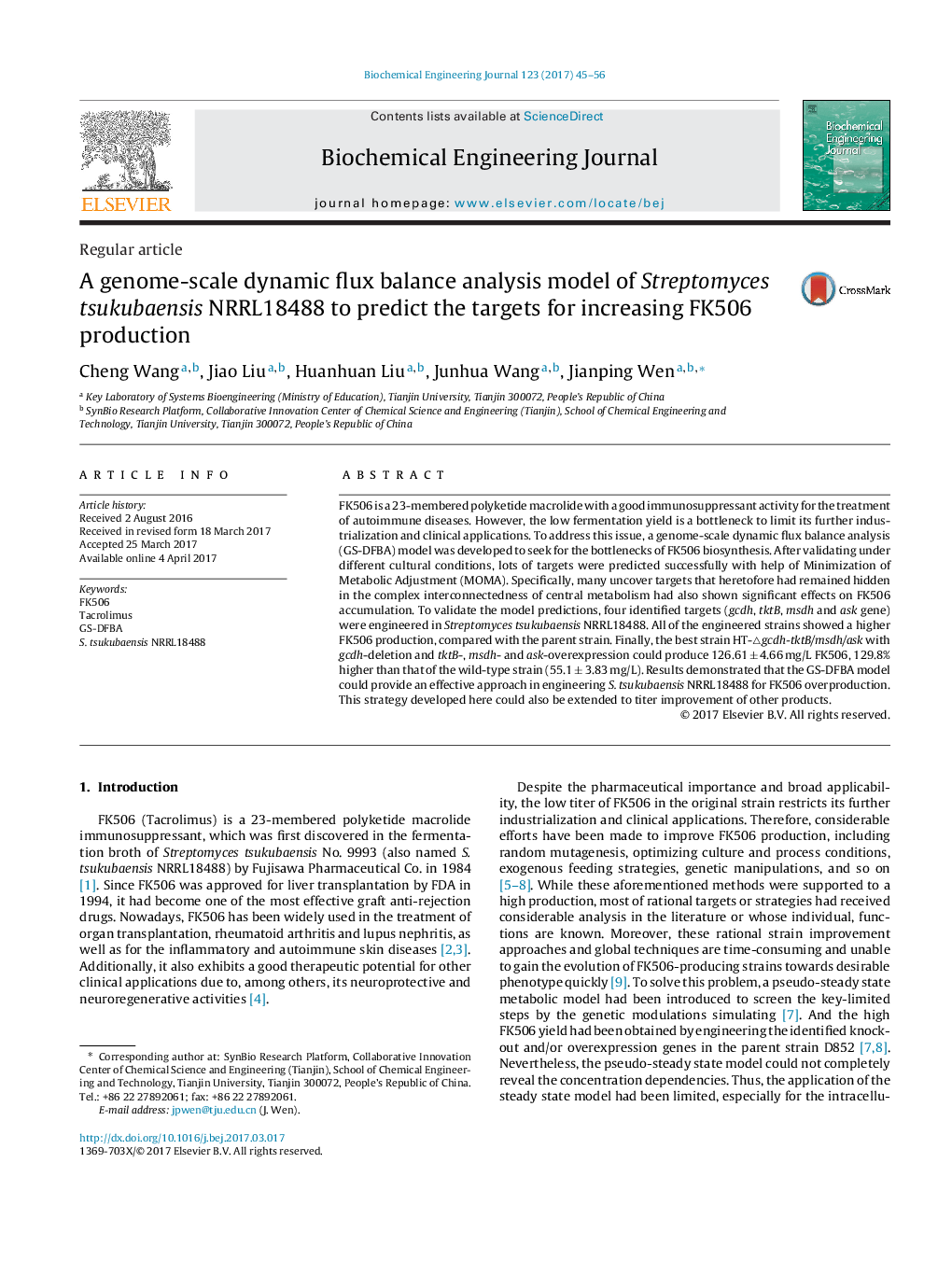| Article ID | Journal | Published Year | Pages | File Type |
|---|---|---|---|---|
| 4752107 | Biochemical Engineering Journal | 2017 | 12 Pages |
â¢FK506 fermentation could be predicted accurately by GS-DFBA in different cultural conditions.â¢Lots of uncover targets hidden in complex interconnectedness of central metabolism was predicted successfully.â¢FK506 production was improved effectively in the engineered strain.â¢This strategy has a huge potential to titer improvement of other products.
FK506 is a 23-membered polyketide macrolide with a good immunosuppressant activity for the treatment of autoimmune diseases. However, the low fermentation yield is a bottleneck to limit its further industrialization and clinical applications. To address this issue, a genome-scale dynamic flux balance analysis (GS-DFBA) model was developed to seek for the bottlenecks of FK506 biosynthesis. After validating under different cultural conditions, lots of targets were predicted successfully with help of Minimization of Metabolic Adjustment (MOMA). Specifically, many uncover targets that heretofore had remained hidden in the complex interconnectedness of central metabolism had also shown significant effects on FK506 accumulation. To validate the model predictions, four identified targets (gcdh, tktB, msdh and ask gene) were engineered in Streptomyces tsukubaensis NRRL18488. All of the engineered strains showed a higher FK506 production, compared with the parent strain. Finally, the best strain HT-â³gcdh-tktB/msdh/ask with gcdh-deletion and tktB-, msdh- and ask-overexpression could produce 126.61 ± 4.66 mg/L FK506, 129.8% higher than that of the wild-type strain (55.1 ± 3.83 mg/L). Results demonstrated that the GS-DFBA model could provide an effective approach in engineering S. tsukubaensis NRRL18488 for FK506 overproduction. This strategy developed here could also be extended to titer improvement of other products.
